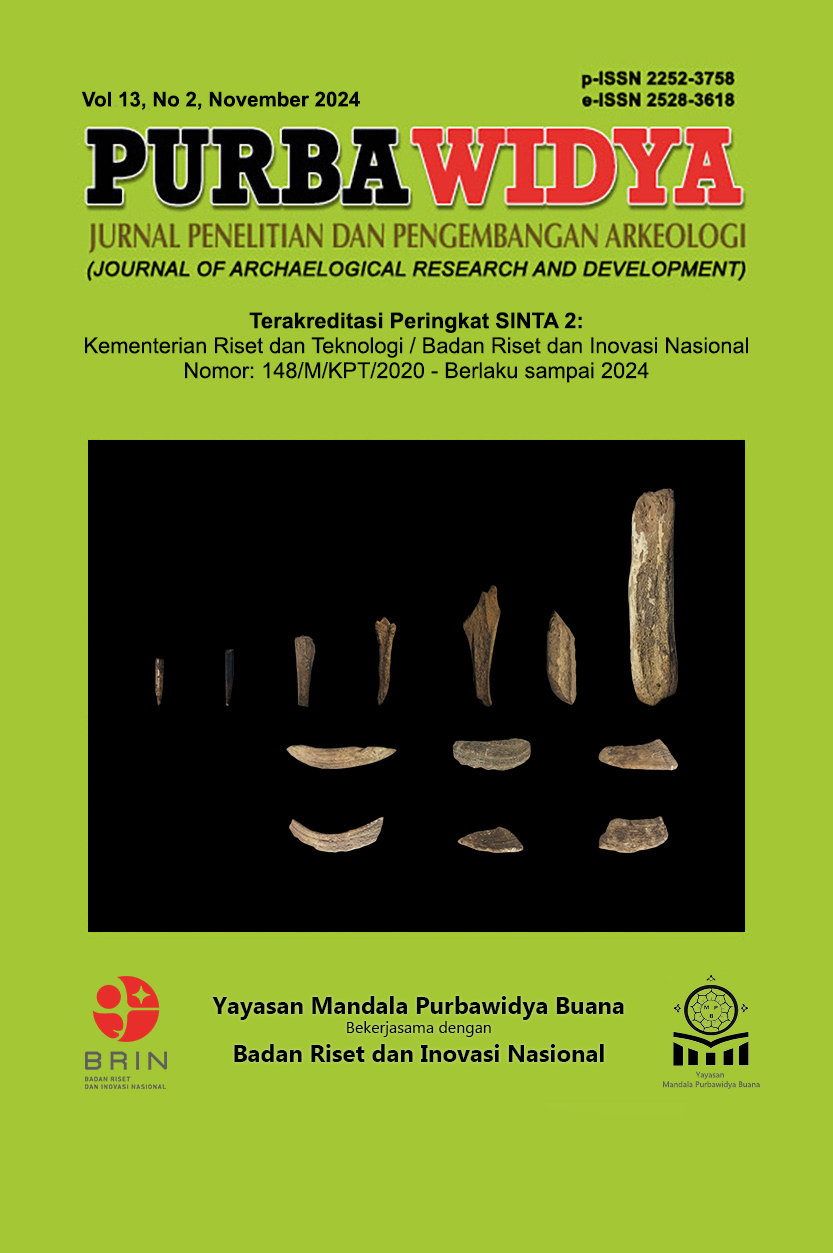Makna Dupa Dalam Tradisi Ziarah Makam Sunan Gunung Jati Cirebon, Jawa Barat
Main Article Content
Abstract
The purpose of this study is to determine the meaning of incense in the pilgrimage tradition of the tomb of Sunan Gunung Jati. The method used is qualitative with the collection of interview data, observation, and documentation. Researchers went directly to the field to collect data. The result of this research is that incense is used in the tradition of tomb pilgrimage Sunan Gunung Jati Cirebon is interpreted as fragnance and solemnity worship symboland intercedes with Allah SWT which is believed to be able to penetrate to the seventh heaven. Incense has a meaning depending on the pilgrim or the wearer including its purpose and background which is generally used to create a solemn atmosphere when praying. Incense is not obligatory for general pilgrims and is only used at certain times and places.
Article Details

This work is licensed under a Creative Commons Attribution-NonCommercial-ShareAlike 4.0 International License.
Authors who publish with this journal agree to the following terms:
- Authors retain copyright and grant the journal right of first publication with the work simultaneously licensed under Creative Commons Attribution-NonCommercial-ShareAlike 4.0 International License that allows others to share the work with an acknowledgement of the work's authorship and initial publication in this journal.
- Authors are able to enter into separate, additional contractual arrangements for the non-exclusive distribution of the journal's published version of the work (e.g., post it to an institutional repository or publish it in a book), with an acknowledgment of its initial publication in this journal.
- Authors are permitted and encouraged to post their work online (e.g., in institutional repositories or on their website) prior to and during the submission process, as it can lead to productive exchanges, as well as earlier and greater citation of published work (See The Effect of Open Access).
References
Alfarauq, Farkhan Abdurochim, Adinda Salsabila Fathya, dan Syaripulloh. 2022. “Sacred Patterns in the Belief System of Kampung Pitu Nglanggeran Village, Gunung Kidul Yogyakarta.” International Journal of Advanced Music, Arts and Culture 2 (1).
Amanu. 2021. “Bukhur Atau Kemenyan, Samakah?” 2021. https://www.amanu.co.id/bukhur-atau-kemenyan-samakah/.
Ariyono, dan Aminuddin Sinegar. 1985. Kamus Antropologi. Jakarta: Akademika Pressindo.
Bustanuddin, Agus. 2007. Agama dalam Kehidupan Manusia Pengantar Antropologi Agama. Jakarta: RajaGrafindo Persada.
“Desa Astana.” 2021. 2021.
Dhavamony, Mariasusaic. 1995. Fenomenologi agama. Yogyakarta: Kanisius.
Faizal, E. W. S. 2017. “Makna Dupa dalam Tradisi Assuro Ammaca di Desa Bone Kecamatan Bajeng Kabupaten Gowa.” UIN Alauddin Makassar.
Geertz, Clifford. 1973. The Interpretation of Culture. New York: Basic Books.
———. 2014. Agama Jawa Abangan, Santri, Priyayi dalam kebudayaan. 2014: Komunitas Bambu.
Kusumastuti, Eny. 2009. “Ekspresi Estetis Dan Makna Simbolis Kesenian Laesan.” Harmonia - Journal of Arts Research and Education 9 (1): 1–9.
Mattulada. 1997. Kebudayaan Kemanusiaan Dan Lingkungan Hidup. Hasanuddin University Press.
Meleong, Lexy J. 2017. Metodologi Penelitian Kualitatif. Bandung: PT. Remaja Rosdakarya.
Nottingham, Elizabeth. 1996. Agama dan Masyarakat. Jakarta: RajaGrafindo Persada.
Pals, Daniel L. 2003. Dekontruksi Kebenaran. Yogyakarta: IrciSod.
———. 2018. Seven Theories of Religion (Tujuh Teori Agama Paling Berpengaruh). Diterjemahkan oleh Inyiak Rindwan Muzir dan M. Syukri. Yogyakarta: IrciSod.
Poerwadarminta, W.J.S. 1985. Kamus Umum Bahasa Indonesia. Jakarta: PN Balai Pustaka.
Sarwoko, Endi, Iva Nurdiana Nurfarida, Moh Ahsan, Indawat Ninik, dan Enike Dwi Kusumawati. 2019. Buku Pengembangan Usaha Dupa Wangi sebagai Produk Unggulan Desa Petung Sewu.". Malang: Mediia Nusa Creative.
Soekanto, Soejono. 1993. Kamus Sosiologi. Jakarta: PT Raja Gravindo Persada.
Suharyanto, Agung, dan Armansyah Matondang. 2018. “Makna Upacara Cheng Beng Pada Masyarakat Etnis Tionghoa Di Medan.” In Prosiding Seminar Nasional Pakar Universitas Trisakti, 21-26.
Suryani. 2021. “Tradisi Ziarah Kubur Di Desa Saleh Mulya Kecamatan Air Salek Kabupaten Banyuasin.” UIN Raden Fatan.
Syaripulloh. 2017. “Mitos di Era Modern.” Sosio Didaktika: Social Science Education Journal 4 (1): 25–35.

